Some garden to grow pretty flowers. Others to harvest prize-winning tomatoes. Some just need something to do. I garden for survival, and with supplies in the United States being shakier than they ever have been, at least in my lifetime, that’s starting to look like a smart life decision.
If you’re a survival gardener, you don’t want to be overly reliant on outside inputs. I don’t have any quasi-religious objections to gas-powered tools like tillers and tractors, but if I need to garden to feed my family in a grid-down situation, I’d be up the proverbial creek if I had to have fuel and could not obtain it.
That means I own a lot of hand tools, or as legendary traditional woodworker Roy Underhill might call them, alcohol-powered garden tools. I’ve dropped close to $1000 on them this year alone: broadforks, wheel hoes, regular hoes, specialty shovels, and even some gimmicky gadgets.
Out of all the tools I’ve purchased this year, one stands out as an instant favorite: my pointed hoe, manufactured by Chillington of England and sold by Easy Digging for $44.
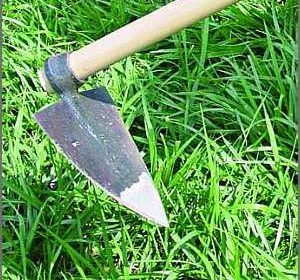
Pointed Hoe by Chillington
Why the pointed hoe is great
Working a garden with hand tools is hard enough, but it’s especially hard in the soils we have in my area of Tennessee. Our dirt is heavy clay, full of rocks, and often severely compacted from livestock. Add tough weeds and punishing summer heat to compound the misery. In these kinds of conditions, you need a tool that’s tough and works quickly.
Enter: the Chillington pointed hoe. While most hoes have a straight business end, the pointed hoe comes to a sharp point. As Easy Digging explains, it was originally designed for hilling potatoes:
It is also called a Ridging Hoe because it gets used to loosen, pull, and pile soil around the base of plants like potatoes. This process is called ridging or hilling because it creates a long raised ridge of soil that encourages a more productive potato crop.
Don’t let that humble description fool you, though. The pointed hoe is useful for so much more than merely hilling potatoes. The sharp tip easily chops up the hardest soil.
It helps that the head of the pointed hoe is heavy steel, eight inches wide at the base. Unlike many contemporary garden tools that are held together with rivets, the head is one solid forged piece of hot-forged high-carbon steel.
It’s hard to see the pictures, but the hoe head is curved in slightly, like a shovel. That means once you chop into the ground, you can pull the hoe back to scoop out dirt. It just plows right past rocks, popping them out of the ground.
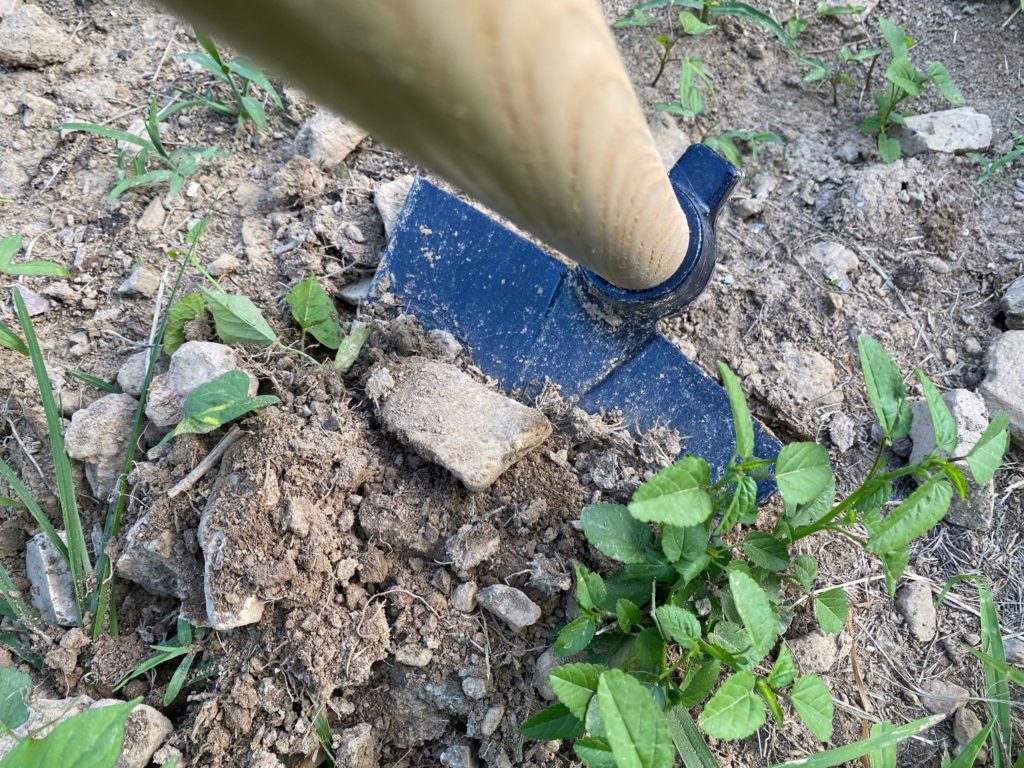
It comes with a five-foot-long ash handle. The long handle gives tremendous reach and prevents you from having to stoop, thus reducing back pain. Ash is a tremendous wood for a tool handle, as it’s light yet tough. As Roy Underhill explains in The Woodwright Shop:
Although ash is somewhat less tough and less shock resistant than hickory, it is lighter and more versatile…It is preferred for making shovel handles and sporting equipment such as bats and oars because of its toughness and strength and its ability to stay smooth under constant rubbing.
Be careful with the hoe!
There aren’t any real drawbacks to the Chillington hoe, except maybe just one: the blade comes incredibly sharp. This isn’t like your typical dull hardware store hoe that can’t cut warm butter. This is a serious tool for digging. You want to be careful when removing it from the box, assembling it, and using it. You could very easily take out an eye or cause a puncture wound if you wield the head around carelessly.
If you don’t already have an individual first-aid kit, you need to put it at the top of your prepping priority list.
Also, you want to be careful when weeding with the pointed hoe, because it’ll cut through your crops as easily as it cuts through weeds.
Assembly
The hoe does not come fully assembled, but it only takes a few minutes to put together. You need a hammer and ideally, a concrete surface.
You first put the handle up against a wall. Then you slide the tool head onto the handle, putting its loop just under a circle drawn on the handle. You’ll want to keep the point pointing up so as to not dull it.
Then you take the included steel wedge and hammer it about halfway into the gap cut into the top of the handle. Once its half in, pick up the tool and slam the wedge against a concrete surface. Lacking concrete, any hard surface, such as a rock, should do.
Once the wedge is fully inserted, you’re ready to hoe!
Use in the garden
It’s a hoe, not a ham radio. There isn’t much to explain here, but I’ll outline some of the potential uses:
- Hilling potatoes, obviously. You can just drag the soil to hill around potatoes. If the ground is hard, use the pointed end to chop it up first.
- Removing weeds at the root. One chop just outside the weed, under the root, usually does the trick.
Removing weeds with the pointed hoe. - Just as it can remove weeds by the root, it can pull up invasive saplings by the root, though it might take a bit more chopping.
- Thanks to the pointed tip, you can drag the hoe along the grow to create planting furrows, though if your soil is compacted you might have to chop it up first or break it up with a broadfork.
I also imagine that, in a pinch, the pointed hoe would help in digging out ditches and swales, though I haven’t tried that yet.
Maintenance
With a bit of maintenance, this hoe should last a lifetime.
Over time, the head might loosen up from the handle. To fix this, simply pound the wedge back into the tool as you did when you set it up.
Every now and again the hoe blade will need to be sharpened. You’ll want some sort of file for this, and while a vise isn’t necessary, it helps. Easy Digging sells a sharpening file for $10 if you don’t already have something on hand. I use a bastard-cut mill file for sharpening my hoes. By the way, if you’re not sharpening your garden tools, then you’re not getting the most out of them. Steve Solomon’s Gardening When It Counts has a section on how to sharpen your garden tools.
You also want to keep the blade fairly clean. Easy Digging recommends a wire brush for that. To prevent rust, coat it in oil when you’re not using it in the winter months. Pretty much any oil will do.
The handle comes with a coating, but if it wears off you’ll want to add something to the wood to protect it. I use boiled linseed oil on all my wooden tool handles. I apply a thin coat with a rag. It’s important to keep it thin, otherwise, it can get sticky, though you can reduce the stickiness with a bit of high-grit sandpaper or other light abrasive. It’s also important to not wad up your used rags because boiled linseed oil can combust. I usually soak them in water and lay them out flat overnight to dry before disposing of them.
Overall, it’s a pretty low-maintenance tool.
Getting to the point
I have nothing negative to say about this hoe. You could spend $20-30 for a crappy, dull hoe at a big box store, or you could spend just a little more and get a quality tool that will last the rest of your life. If gardening is part of your preps, good hand tools are a must so that you’re not completely reliant on gas or electricity. I’m impressed by the quality of Easy Digging’s offerings so far, and they’ll be my first stop for new tools in the future.
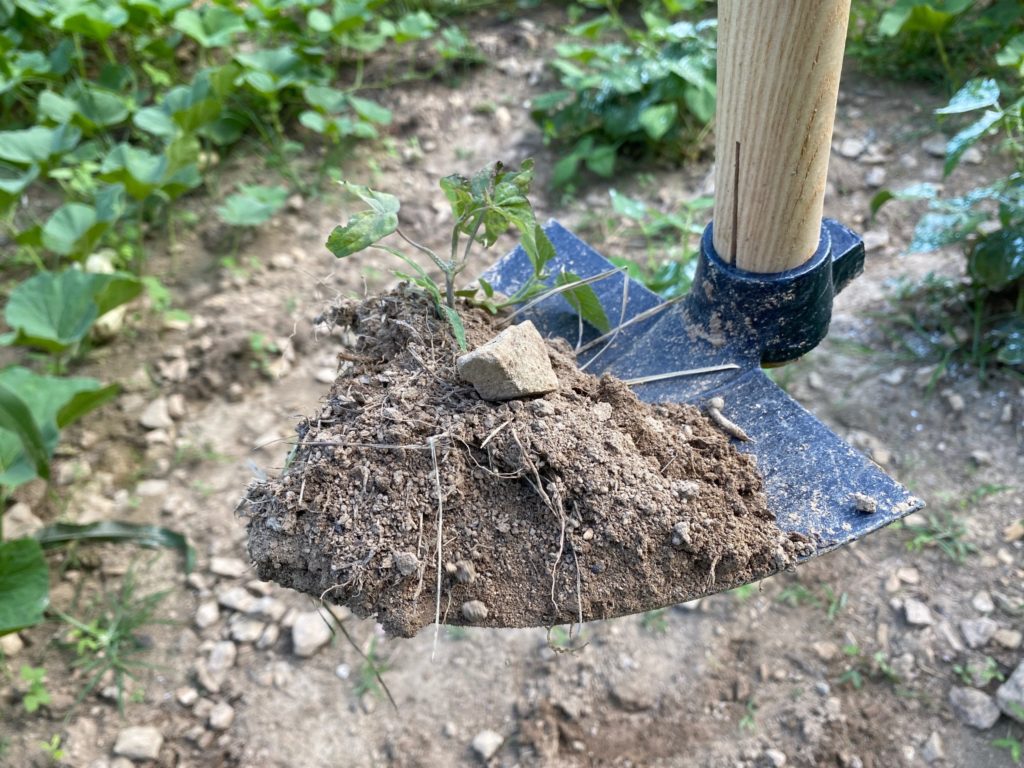
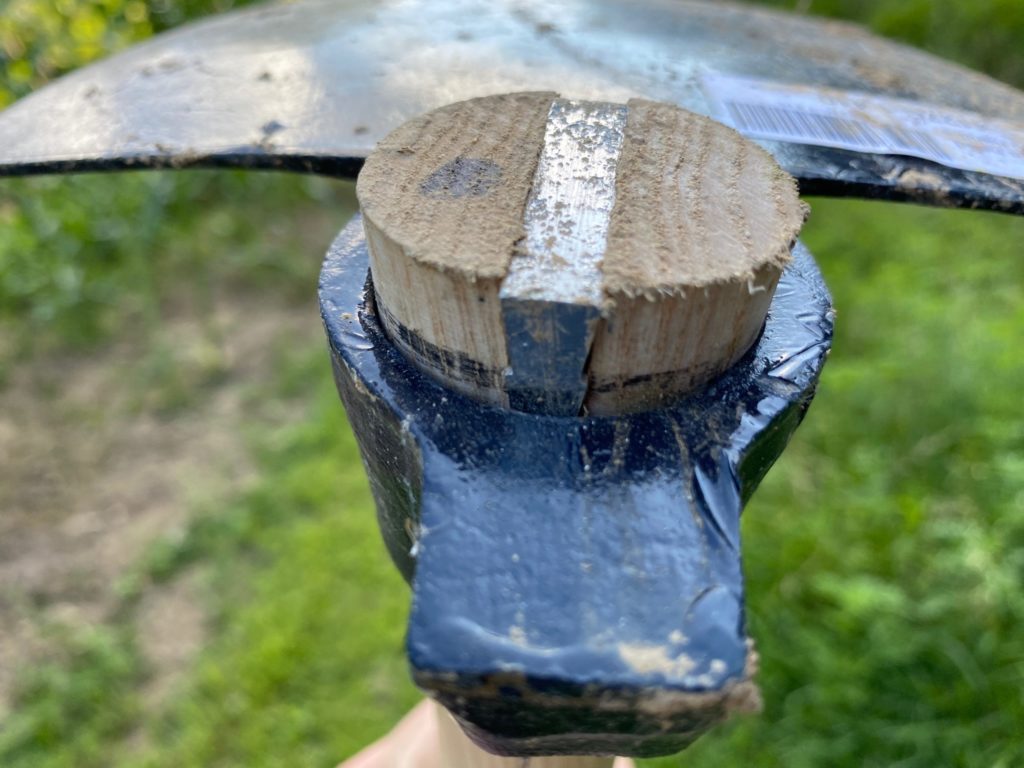
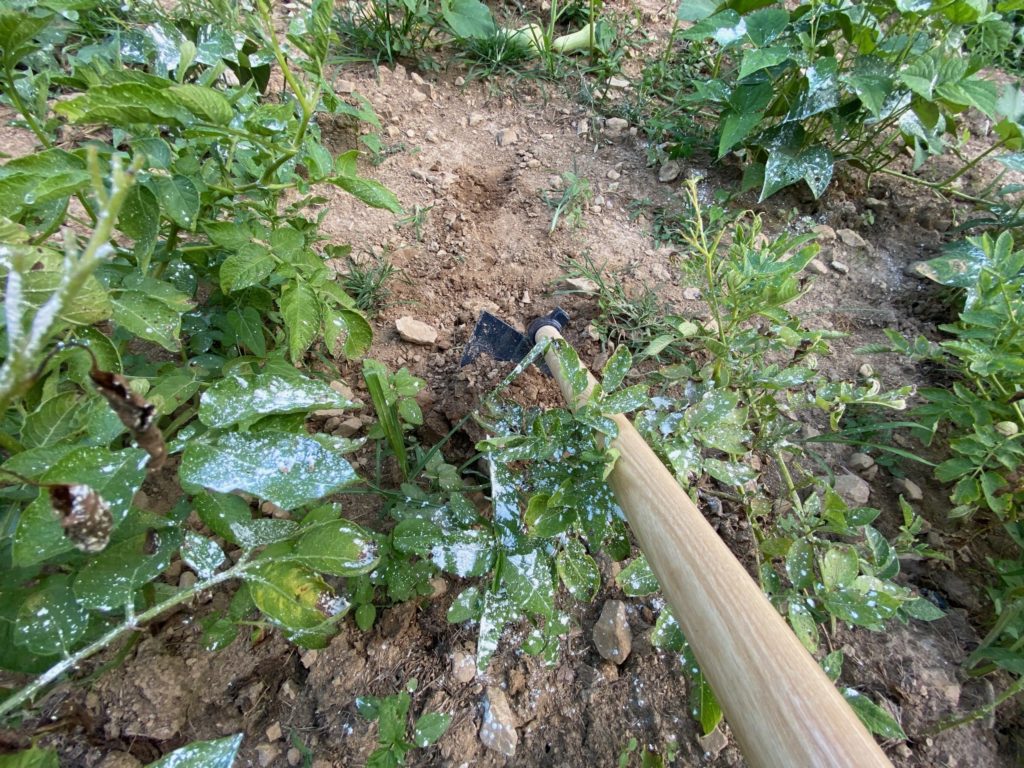
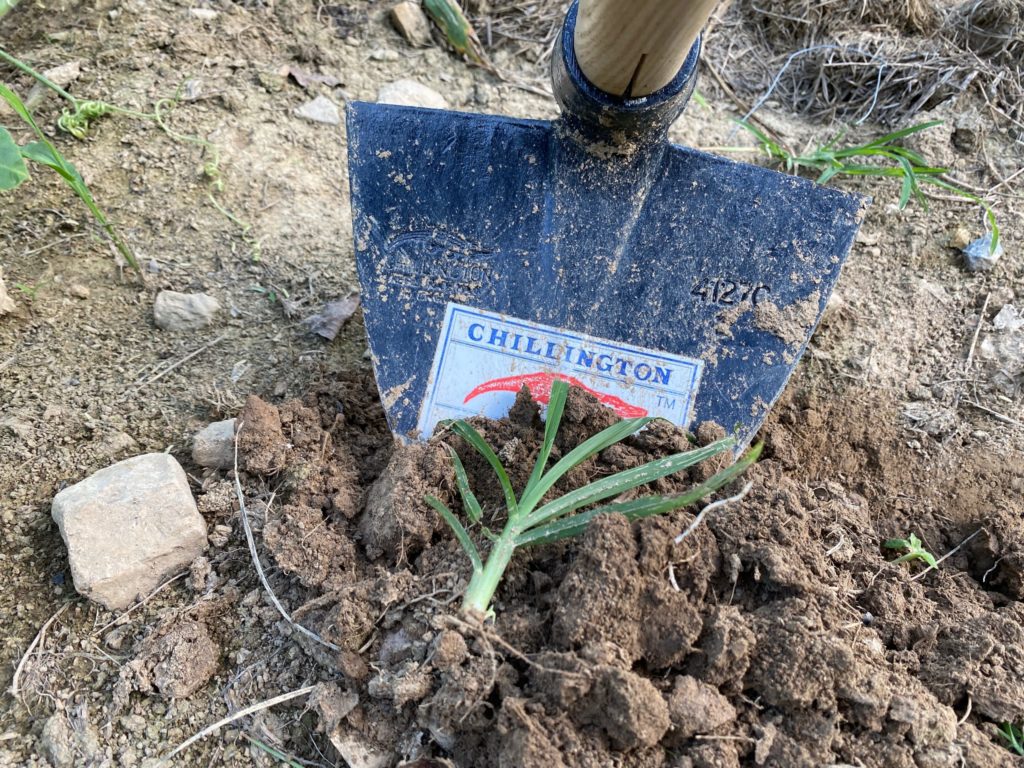
You are reporting the comment """ by on